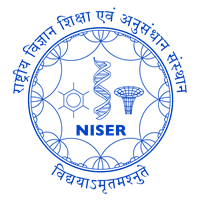

Professor
sghoshniser.ac.in
+91-674-2494000 > 2192
Postdoctoral Fellow: (2011-2012) with Prof. Tahei Tahara, Riken, Japan
Postdoctoral Fellow: (2009-2011) with Prof. Paul F Barbara, University of Texas at Austin, USA
PhD Fellow: (2005-2009) with Prof. Kankan Bhattacharyya, Indian Association for the Cultivation of Science, India
M.Sc: (2002-2004), Vidyasagar University, India
Molecular and Single Molecule Spectroscopy
Ramanujan Fellowship Award: DST-SERB (2012)
NET(JRF) & SET: CSIR & WBCSC (2003)
Gold Medal: Vidyasagar University (2002)
Publication List Available on Google Scholar
https://scholar.google.co.in/citations?hl=en&user=LPYm4jUAAAAJ&view_op=list_works&sortby=pubdate
Single Molecule Spectroscopy and Fluorescence correlation Spectroscopy
Recent advances in single molecule spectrscopy has revolutionised chemistry and biology. The conventional studies in bulk solution give an average over large number of molecules. Single molecule studies reveal that individual molecules differ in reactivity, mobility and other properties which can not be studuied by bulk measurement techniques. Our research is motivated to contribute the latest developments in this field.
Our work on polarization of single-molecule absorption of random copolymers (MEH-PPV) shows how defect inclusion could affects their morphology. This study also demonstrates that defects that preserve the linear backbone of PPV-type polymers assume a highly anisotropic configuration in defect free MEH-PPV. We are interested on conjugated copolymers because they have numerous applications in molecular photonics, photovoltaic cell, molececular wire and light harvesting apparatuses.
Fluorescence correlation spectroscopy (FCS) is an efficient single molecule technique, using FCS we studied mobility (diffusion) of organic dyes in the lipid vesicle. We show that lipid vesicles of same size and same chemical composition do not have same diffusion coefficients and there is a wide variation (distribution) among the diffusion coefficients is observed. This is attributed to the vesicle shape fluctuations. This indicates structures of biological assemblies are fluctuating. We also studied phase dependence (gel and fluid phase) and region dependence in a lipid vesicle.
Ultrafast Spectroscopy
Using picosecond TCSPC and femtosecond up conversion technique, we study several photo physical processes like solvation dynamics, fluorescence resonance energy transfer (FRET), proton transfer, photo-induced electron transfer (PET) and fluorescence anisotropy decay. Most of the chemical processes take place in a very fast time scale and the entire process cannot be detected by using only picosecind set up. We frequently use femtosecond up-conversion set up which enable us to resolve very fast dynamics (<1 ps). Ultrafast dynamics is ubiquitous in all kind of supramolecular assemblies. Interestingly, even in biological system (i.e., proteins, DNA, RNA) where the water molecules are strongly bound at the vicinity of biomolecule, exhibit a significant amount of ultrafast dynamics which remains undetected even in the femtosecond set up.
We have studied ultrafast solvation dynamics in different regions of a lipid vesicle through variation of excitation wavelength. Our study has shown that the dynamics varies from region to region and is substantially slower than that in bulk water. Apart from solvation dynamics we have investigated ultrafast fluorescence resonance energy transfer (FRET) in different organized assemblies. In an organized assembly, confinement of a donor and an acceptor at a close distance is expected to accelerate the rate of FRET. The expectation can verify by using ultrafast techniques.
Photo induced electron transfer (PET) plays a fundamental role in many chemical and biological processes. The classic Marcus theory assumes equilibration of solvent at each point along the reaction co-ordinate (i.e., solvation).This theory predicts a bell shaped dependence of rate of electron transfer (ET) on the free energy change. We have detected similar kind of bell shaped dependence of ET rate with "delta G" in three micelles even though major part of solvation is slower than ET.
Present Members (ongoing)
Past Members (Graduated)
C402 - Chemical Rate Processes
C242 – Electronics Laboratory
C206- Quantum Chemistry I
C302 -Molecular Spectroscopy and Group Theory
C101-Chemistry I
C141-Chemistry Lab I